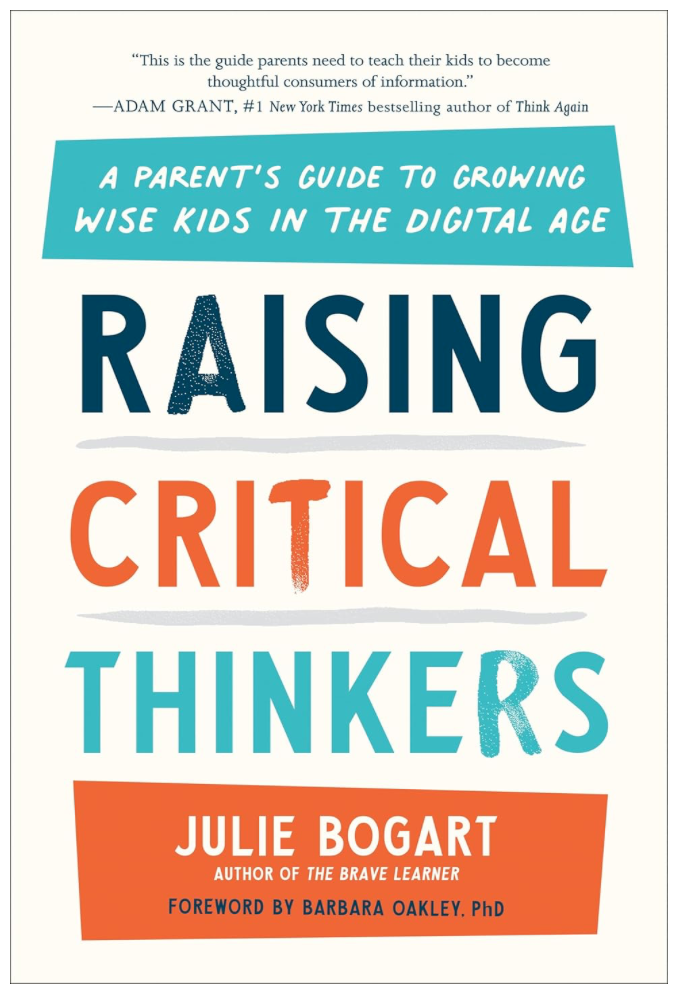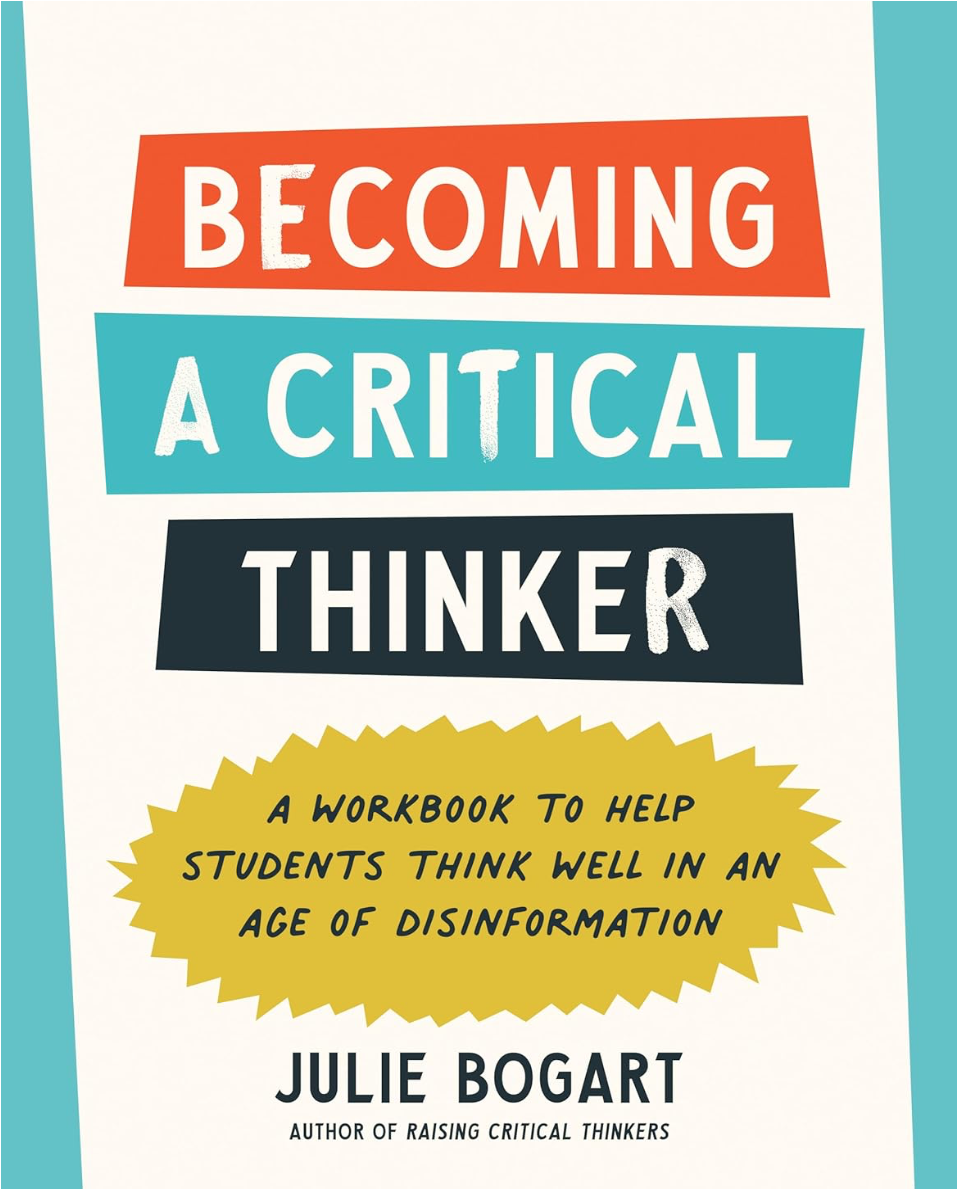Raising Critical Thinkers: Why This Must-Have Book Belongs on Every Homeschool Parent's Shelf
There are some books that you can breeze through into audio format or digital… and then there are the ones you underline, scribble in, and revisit like a trusted friend. Raising Critical Thinkers by Julie Bogart is the latter. It's one of those rare books that doesn’t just inform: it transforms. It has become a foundational tool in both my homeschool and my own personal development as a parent.
I didn’t expect to have such a meta moment the first time I cracked it open. I was trying to define what homeschooling really meant to me, not just as an educational path, but as a way of being in the world with my daughter. I thought I was reading this book to help teach my kid. What I found instead was that I had to start with myself.
Bogart’s definition of a critical thinker stopped me in my tracks. It wasn’t about being clever or debating well. It was about self-awareness, empathy, humility, and the ability to hold multiple perspectives in tension. It was about reflecting before reacting and recognizing the roots of our own beliefs before judging others'. That made me pause. How often had I rushed to “teach” without taking the time to question my own assumptions? I have had these moments so many times as a parent, and my daughter is old enough now where she has asked me WHY. Critical thinking, it turns out, can help you get to your own WHY.
In that sense, Raising Critical Thinkers became a mirror. And the more I read, the more I realized how crucial this mindset is not just for raising a wise kiddo, but also for assisting wise parents.
The Holy Grail of KWL Charts
If you’re a homeschool parent, you probably know KWL charts: what I Know, what I Want to know, and what I’ve Learned. Julie Bogart’s work felt like the grown-up, soul-searching version of that. This book made me take stock of what I “knew” about education, about parenting, about the world, and then gently challenged me to consider what I wanted to learn alongside my child. I used my newly learned critical thinking skills as a forty something adult to reframe my own understanding of my role in homeschooling.
The framework applies to kids, too. When we introduced a new topic (I used it for a Tom Sawyer activity), Bogart’s framework helped me shift the focus away from just getting the “right” answers. Instead, we started asking better questions. We talked about where ideas come from. How different cultures might see the same concept differently. What emotions or beliefs we were bringing into the learning space. It became about thinking with my child, not just teaching to her. It created meaningful conversation instead of lecture.
That small shift created some of our most meaningful homeschool moments.
So… What is a Critical Thinker?
Julie Bogart doesn’t define a critical thinker by academic achievement or quick wit. Instead, she paints a picture of someone who is able to think about their own thinking… someone who can:
Pause and reflect on their reactions
Hold space for disagreement
Ask thoughtful questions
Recognize and challenge their own biases
Practice empathy in conversation
A critical thinker is not someone with all the answers, but someone who is willing to sit in the discomfort of not knowing long enough to uncover deeper truth.
Who Gets to Decide?
Here’s where Bogart really challenges the educational status quo. In a world obsessed with measuring outcomes, she reminds us that no one gets to declare who is or isn't a critical thinker. It’s not a label handed out by a teacher or earned through a grade. It’s a mindset: one that is cultivated over time and through practice.
And that mindset begins at home. As parents, we are the first and most consistent model our children have. If we want them to engage with the world thoughtfully and courageously, we have to show them how.
Bogart doesn’t shame or preach… she gently guides. She reminds us that modeling vulnerability, admitting when we’re wrong, and being open to change are some of the most powerful teaching tools we have.
Raising (and Becoming) a Thinker
Raising Critical Thinkers offers age-specific tools to foster this mindset through all stages of childhood, from picture books and pretend play to social media and online debates. It offers practical strategies: how to frame questions, how to guide children through bias, how to build emotional intelligence into everyday learning.
But even more than that, it’s a book that leaves you different than you were when you started it.
It helped me refine the heart of my homeschool: not just to raise a child who can pass a test, but to raise a child who can live with wisdom, integrity, and curiosity. And in the process, it made me a better thinker too.
Buy the Paperback
This is not a book you’ll want to keep on a screen. Trust me! Get the paperback. Get your pens. Get your sticky tabs. You’ll return to it again and again, each time finding something you missed before.
Raising Critical Thinkers is one of those books I now consider essential. It’s not just a resource for homeschoolers… it’s a lifeline for anyone raising kids in the digital age, anyone trying to build a more thoughtful home, and anyone looking to be more intentional about how they move through the world. Bogart also created a workbook guide to for free-teens and teens, titled Becoming a Critical Thinker. It perfectly puts the knowledge of her work into guided practice.
It's a must-read. And, if you’re like me, it might just change the way you think about parenting, about learning, and about yourself.








